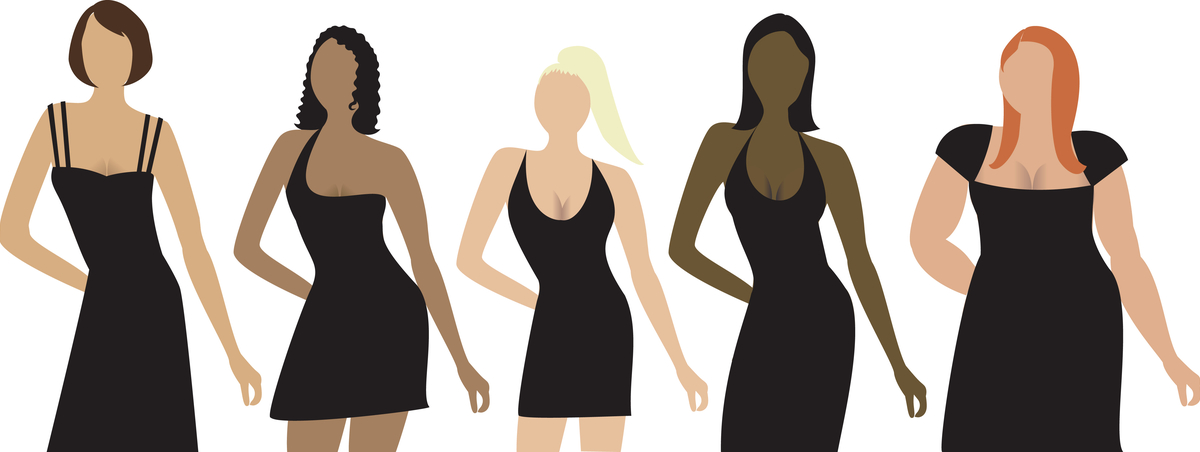Does Conventional Ways Of Sizing Clothes Matter In The New Age of Fashion



Sizing has always been a necessary aspect of the fashion industry. It has always been broken, especially for plus-size customers. Looking at the history of clothing sizes, the standard dress size chart came into existence sometime around the civil war and became a norm for hundreds of years. The conventional method of sizing clothes has always considered the dress size chart according to hourglass body type in women. Plus-size fashion has always been a problematic area in the conventional clothing size. But new-age fashion has started considering the apparels for the plus-size people too. Earlier, they had to rely upon tailor-made clothing. The traditional way of sizing clothes does not matter much in the new age of fashion. We can say this as the fashion industry has seen a lot and changed a lot in the past years. We will explore more about this in this article. Let us get started.
History of sizing systems
Today, the fashion industry has made the shopping experience for customers as convenient as possible, but there was a time when sizing was the most confusing thing while shopping. The numbers or letters specifying the size should be easy to understand for the customer rather than confusing them. Moreover, the different brands follow different dress size charts for the measurement, which is confusing for the customers. To ease that universal sizing system was invented recently.
Statistical data of the 1940s and 1950s got used to developing the US standard clothing size, similar to the European clothing size standard. The individual manufacturers had followed the different sizing standards. Later, because of the varying cultural pressures, vanity sizing drifted the North American clothing size from the standard one. They now follow the US catalog size, which is loosely defined.
- Ready to wear clothing
Ready to wear dresses follow the dress size chart created according to the designer or brand. These are helpful as customers can readily buy them at the store with perfect fitting. This clothing follows standardized sizing. It has a disadvantage that not everyone gets the ideal fitting and may have to compromise with the fitting.
- Made to measure clothing
These are tailor custom clothing created according to the size of a person for whom it is getting ready. Earlier, this was the only way of clothing available. It does not follow any standard dress size chart but is designed and customized according to the customer's body.
Lack of sizing standard

The US recognized the cost of lack of standardized sizing was getting very high, mainly because of the cost of return items. The companies wanted to minimize this cost, so they performed a study on 15000 women and took 59 measurements each to get a national standardized sizing. The main problem arose when this standardized sizing was followed in the modern-day fashion industry without considering the plus-size. As a result, the bulky men and women had to customize their apparel to get the right fit. The modern retail chain still followed the same dress size chart for conventional body types, and plus-size fashion continued to be a problem. If they keep the clothes for plus-size people, the stock used to be minimal to avoid the wastage of apparel. Companies wanted to reduce the cost because ordering a few pieces of every size made them costly. Hence, the need for standardizing clothing sizes got created.
Need to develop the standardizing clothing sizes
Later, the standardized waist and hip size, elbow girth, and ankle height were done. It failed due to many reasons. The US Center for Commerce took the data from the National Center for Health Statistics in 1971 to create an accurate dress size chart. It also failed, so sizing guidelines were ignored and finally disbanded.
Plus size apparels

The fashion industry had to struggle a lot to meet the clothing size needs of plus-size customers. Later, many in the fashion industry tried to work on this shortcoming. Clothing sizes are the label size marked on the clothes to be sold. Different types of clothing, such as tops, dresses, skirts, and trousers, follow other size charts all across the globe. The size labeling follows three approaches:
- Body dimension: The label refers to the body measurements as per the product. For example, head girth measurement defines the size of a bike helmet.
- Product dimension: This label specifies the specific dimension of the product. For example, the waist size of the jeans.
- Ad hoc size: The label, in this case, refers to the size code in the form of a letter or number with no direct relation to the measurement.
The traditional clothing system follows the ad hoc sizing system that resulted in the variable sizing methods to be followed by different manufacturers according to different countries, increased obesity, and changing demographics. That is what we call vanity sizing. As a result, vendor-specific and country-specific labels were created. Also, a new standard for the size of clothes got developed depending upon the body dimensions.
Conclusion
The fashion industry has started manufacturing apparel for both big and small-sized people. The hourglass body shape was no longer a stereotype. Brands have started availing the clothes of various designs and colors for every sized customer. Fast fashion focuses on creating the standardized dress size chart for selling. In this way, they could lessen the cost by creating customized sizes. Slow fashion was the solution for the problem created by conventional sizing and is being followed by the fashion industry these days. We, at Fashinza, understand the clothing needs of every size person and thus promote plus-size fashion too. Fashinza is an apparel manufacturing platform where retailers can get apparel following the standard dress size chart. We have a supply for plus-size fashion too. If any retailer faces issues in availing the plus-size clothing, they can contact Fashinza and meet their needs.



















